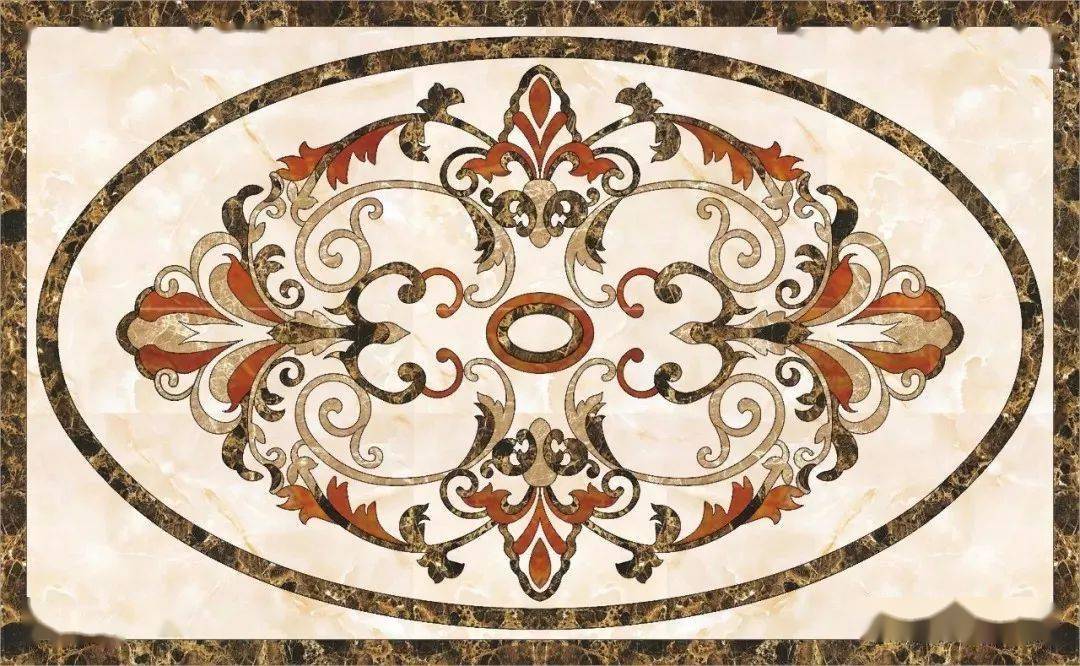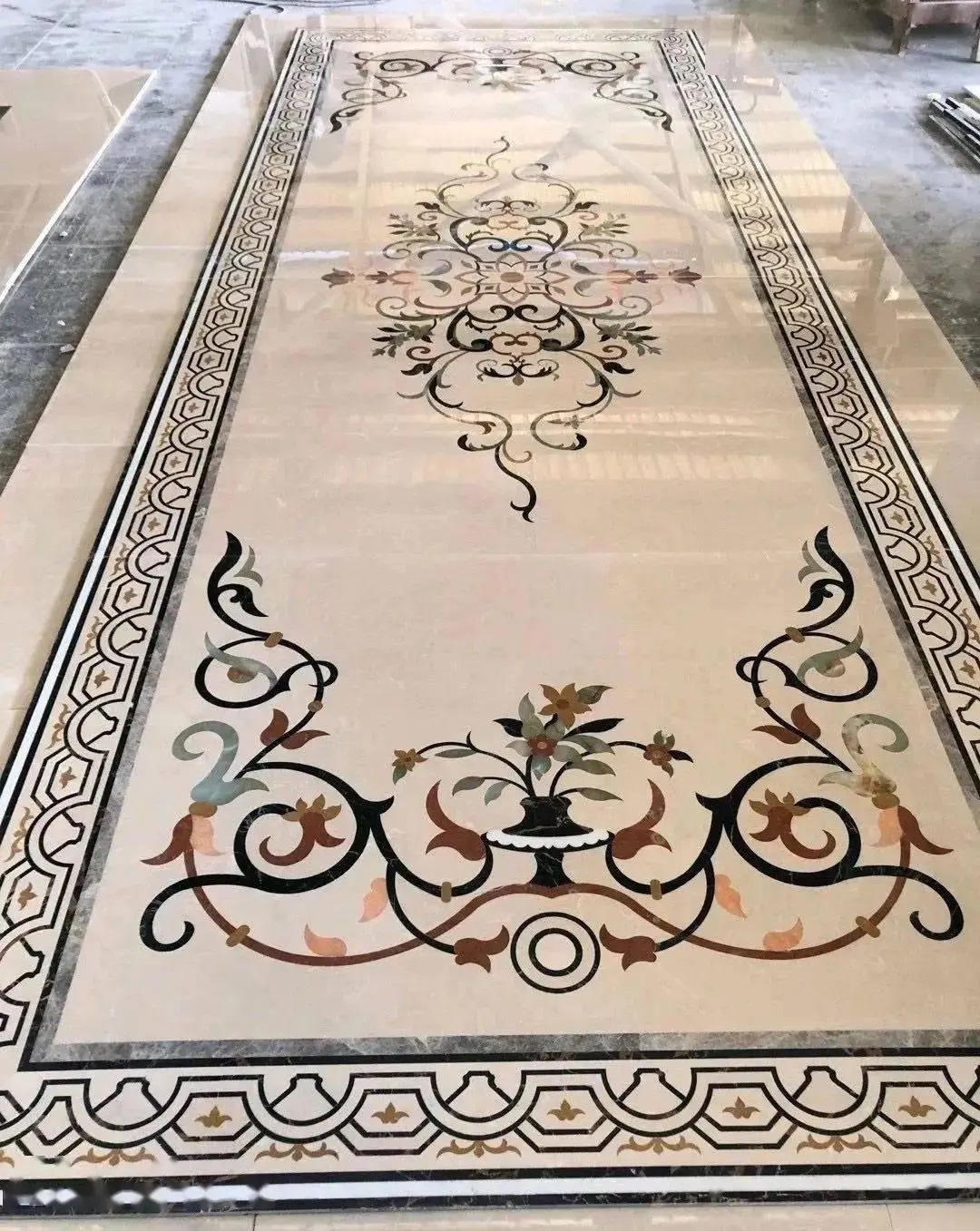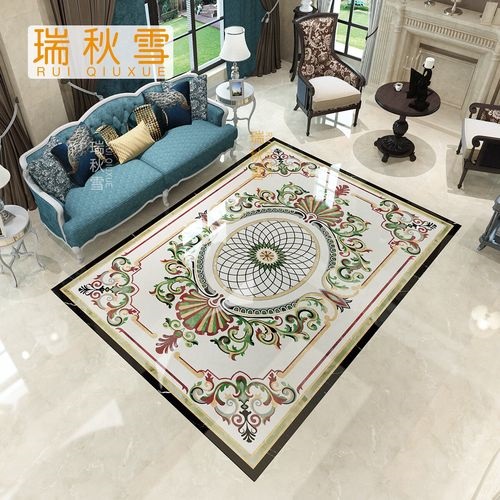Design and processing technology of stone mosaic
Stone mosaic is a beautiful natural stone painting created by people through artistic conception, replacing pigments with stone. It is mainly achieved by utilizing the unique natural colors, textures, and materials of natural stone, combined with clever artistic concepts and designs.
Due to the rich and varied layout effects of natural marble, and the fine texture and moderate hardness of marble, it is very suitable for the processing of mosaic. Therefore, most stone mosaic is made of marble. Therefore, the commonly referred to stone mosaic sometimes specifically refers to marble mosaic. The newly developed sandstone mosaic and slate mosaic are also very unique, but their applications are relatively limited.
With the development of stone processing technology and techniques, as well as the complexity of patterns and designs in stone mosaic, stone water jet cutting equipment is widely used in the processing and production of stone mosaic. For complex mosaic designs, water jet has become an indispensable tool, so stone mosaic is also known as water jet mosaic.
1、 The processing principle of stone mosaic
TERM BEGINS
Stone mosaic is widely used in modern architecture for decoration on floors, walls, countertops, and other surfaces. With its natural beauty of stone (color, texture, material) and people’s artistic conception, it creates exquisite patterns.
The processing principle is to use computer-aided drawing software (CAD) and computer numerical control programming software (CNC) to convert the designed patterns into NC programs through CAD, and then transfer the NC programs to the CNC water cutting machine to cut various different materials into different pattern components using the CNC water cutting machine. Finally, the various stone pattern components are manually spliced and glued together to form a whole, completing the processing of water jet splicing.
2、 Design and processing of stone mosaic
TERM BEGINS
(1) The design of stone mosaic
To design stone art pieces that are both beautiful, practical, artistic, and loved by consumers, it is necessary to delve into daily life, observe and understand people’s preferences and needs, and capture creative inspiration from life. The composition of painting should originate from life, be higher than life, and be innovative. As long as you observe more and are willing to use your brain, your potential and functions can be fully realized, and good works of art will be displayed on paper.
(2) Material selection for stone mosaic
The raw materials for patchwork are extremely abundant, and there are abundant leftover materials at the edges and corners that can be utilized. As long as high-quality materials with bright colors and consistent stone patterns are carefully selected and artistically processed, colorful artistic treasures can be created.
Stone mosaic, small ones can utilize various waste materials from the edges and corners of stone, while large ones use board materials. By designing, selecting, cutting, gluing, polishing, and other processes, we aim to create stone handicrafts that are aesthetically pleasing and artistic. It is an art pattern decoration that integrates stone processing art, decoration design art, and aesthetic art. Decorated on the surface of floors, walls, tables, and furniture, giving people a refreshing and elegant feeling. A large puzzle, embedded on the ground of the auditorium, dance hall, and square, with its majestic and magnificent aura, summoning you to run towards a brilliant tomorrow.
Material selection: In principle, the selection of materials for stone mosaic should be based on the material requirements proposed by the customer to the salesperson when placing an order. Select materials according to the national stone industry standards without any material selection requirements from the customer.
Color: The entire stone mosaic must have the same color, but for certain materials (such as Spanish beige, old beige, coral red marble, etc.) that have color differences on the same board, the principle of gradually transitioning colors is adopted for material selection, with the principle of not affecting the aesthetic decoration effect of the mosaic. When it is impossible to achieve good decorative effects and meet the customer’s processing requirements, material selection and processing can only be carried out with the customer’s consent.
Pattern: In the processing of stone mosaic, the direction of the pattern depends on the specific situation, and there is no absolute standard to refer to. As for circular stone mosaic, the pattern can revolve around the circumference or along the radius direction. Whether it is along the circumferential direction or along the radial direction. We must ensure the consistency of the patterns. As for square stone mosaic, the pattern can radiate along the length direction, width direction, or simultaneously radiate along the long main attack width direction to all four sides. As for how to do it, it depends on the best decorative effect of the processed stone mosaic.
(3) The production of stone mosaic
The processing and production of stone mosaic can be divided into five steps:
1. Draw the mold. According to the design requirements, draw the mosaic pattern on the drawing paper, copy it on the three plywood with carbon paper, and indicate the color of the stone used for each pattern. Write a number based on the connection direction between the patterns to prevent confusion. Then use a sharp knife to cut out the pattern mold piece by piece along the lines of the pattern. The cutting line should be vertical and not inclined, and the arc angle should not be misaligned.
2. Accurate material selection and pre cutting width. There are stones in various colors such as red, white, and black in the patchwork pattern. Some of the same colors also have shades. When selecting materials, it is necessary to accurately select stone slabs with clear textures, fine grains, pure and consistent colors, and no cracks according to the drawing requirements. Accurately carve the selected stones according to the shape and specifications of the mold, and cut the selected parts one by one. When cutting, there should be machining allowance on the periphery, with a pre width of 1-2mm, for the purpose of positioning and repairing.
3. Carefully blend in, group and stick together. Slowly grind the reserved part of the cut pattern stones until the connection line matches, use a small amount of adhesive to fix the position, and then use strong adhesive to stick and assemble one by one into the overall pattern. When bonding, divide into several groups based on the connection of each small pattern. First, run in and stick together from the center, then run in and stick together separately, then run in and stick together from group to group, and finally run in and stick together with the frame. This orderly splicing is efficient, high-quality, and not easy to move.
4. Color adjustment and seepage, reinforcement with mesh. After the overall pattern is glued together, mix and color it with epoxy resin, stone powder, and pigments to achieve an absolute similarity between the color and the stone color. Then, add a small amount of drying agent to mix and quickly penetrate into the gaps of each connection position, and later scrape the surface color. Spread fiber mesh, sprinkle stone powder with resin, evenly smooth, and make the mesh bond with the stone slab.
5. Polishing and polishing. Place the glued mosaic stone slab steadily on the grinding table, grind it smooth, without sanding, and polish it with wax.
3、 Acceptance criteria for stone mosaic
1. The color of the same stone type should be consistent, without obvious color differences, spots, or defects in color lines, and there should be no yin or yang colors;
2. The patterns of stone mosaic are basically the same, and there are no cracks on the surface of the board;
3. The error in peripheral dimensions, gaps, and pattern splicing position is less than 1mm;
4. The flatness error of stone mosaic is less than 1mm, and there is no sand road;
5. The surface glossiness of stone mosaic shall not be less than 80 degrees;
6. The color of the adhesive used for bonding gaps or repairing stones should be the same as the color of the stones;
7. Diagonal and parallel lines should be straight and parallel, curved corners should not be misaligned, and sharp corners should not be blunt;
8. The packaging of stone mosaic products should face a smooth surface and indicate the installation direction indicator number, and attach a qualified label.
Post time: Jan-09-2024



